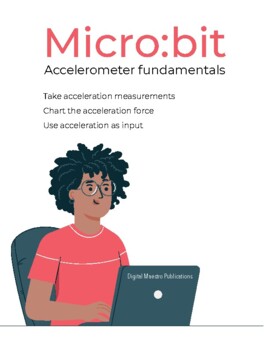Micro:bit Accelerometer Funcamentals
- PDF
What educators are saying
Description
This lesson demonstrates how to use and gather information from the Micro:bit accelerometer. Use this lesson to reference lessons in science and math.
The accelerometer measures motion and acceleration. Use this information to reference concepts learned in science on mass, motion, acceleration, and velocity. Use the sensor to measure motion, acceleration, and velocity.
The accelerometer measures acceleration along the x, y, and z planes. Use this information to reference the coordinate plane used in math to plot shapes, lines, and slopes. How can the numbers measured by the accelerometer be graphed? Can we plot the slop of the values from the accelerometer?
With the code, we instruct the Micro:bit to create a bar chart of the acceleration values. Discuss how the Micro:bit uses the numbers from 0 to 1023 to plot the chart. Use this to make the connection to data plotted on charts for science and business. How are charts useful at visualizing information?
The code uses condition statements to modify the acceleration chart. Discuss with students how computers make decisions. How is this process similar to and different from the way humans make decisions. Is this part of computational thinking?
The code uses the accelerometer values as input to make decisions. Discuss with students how numbers are used by people and machines to make decisions.





